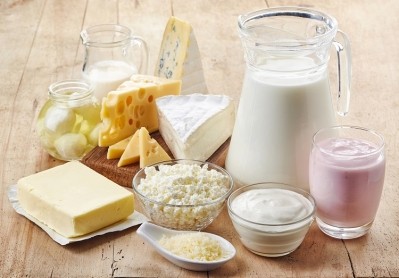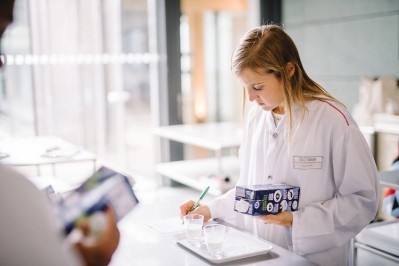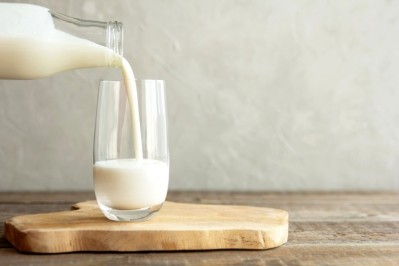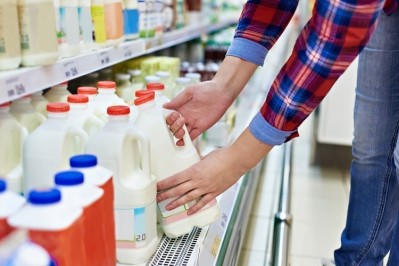Disrupting alt milk with oat powder: ‘By cutting packaging waste and transport miles, we sell a sustainable way of consuming milk’
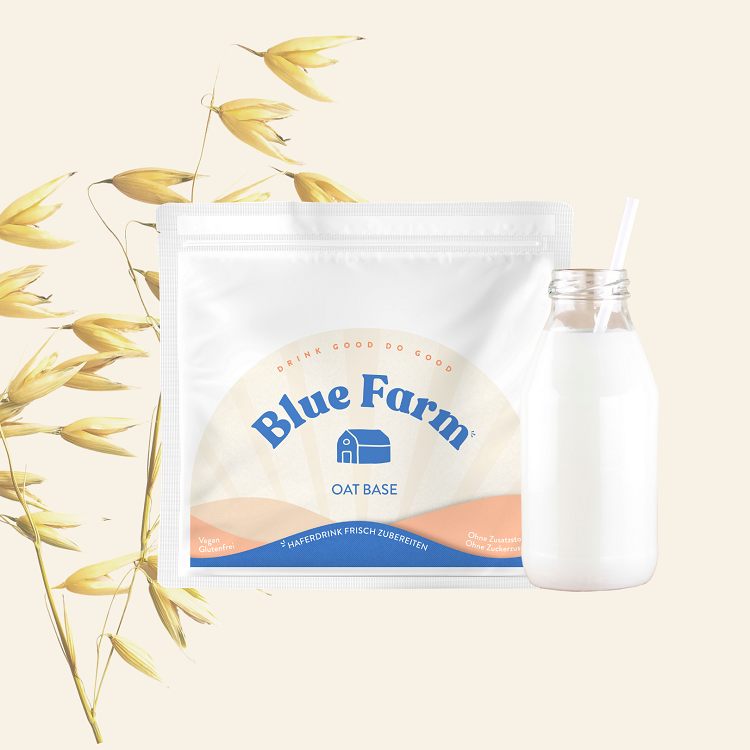
Dairy alternatives have gone from strength to strength in recent years. According to Market Study Report, the global market was valued at $19.2bn in 2019. The market analysts predict a y-o-y growth rate of 11.4% until 2027.
A key driver of their uptake concerns the sustainability of oat, almond, soy, rice, and coconut milk alternatives, amongst others, compared to cow’s milk. Researchers estimate that one glass of dairy milk is responsible for three times as many greenhouse gas (GHG) emissions compared to dairy-free alternatives. Plant-based beverages in this space also use significantly less land and water.
But is there a way for plant-based drinks to be even more sustainable? German entrepreneur Philip von Have and his co-founder Katia Helf believe they has found a way. This latest venture, centred around oat milk, cuts packaging waste and transport emissions, von Have told FoodNavigator: “We are selling a sustainable way of consuming milk.”
Shake it ‘til you make it
Von Have worked in coffee before turning his hand to alt milk. The entrepreneur recalled how his coffee clients wanted him to diversify into milk distribution. “We tried to deliver milk,” he recounted. “But from an operations standpoint, it was so annoying to have litres and tonnes of liquid that you have to transport around.”
At the same time, von Have’s clients were complaining about having to dispose of hundreds of Tetra Pak cartons every week. “I wanted to reduce the complexity of logistics while also reducing packaging waste,” he told this publication.
Blue Farm’s oat powder is designed to do just that. Sold in flexible packaging, a 375g packet of oat base makes up to four litres of oat milk, and a 775g packet makes up to eight litres.
It arrives in the letterbox, consumers dose out the powder into a bottle, add water, and shake for five to 10 seconds ‘to achieve a fresh and creamy oat milk’.
For von Have, the sustainability benefits are obvious. “We have less packaging waste and fewer transport emissions, because we are not shipping litres of water from A to B to C.”
Having run the numbers, Blue Farm can confirm its product saves more than 80% packaging waste. The packaging saved, of course, also has a climate footprint, “so we also save on CO₂ there,” the CEO explained. The start-up estimates it saves close to 70% on transport costs thanks to space and weight efficiencies.
But does it use less water overall?
Whether Blue Farm saves on water overall is a slightly more complex question, given that some water is used in the production of the oat base, then dried off, before being added again by the consumer.
Producing Blue Farm’s oat base is a multi-step process. To start with, the oats are mixed in with water and enzymes to kickstart a fermentation process. This helps create the sweet, silky, and creamy attributes in the finished product, the CEO explained. “There is a specific cooling and heating process to control the activity of these enzymes in a certain way.”
This process produces a ‘highly concentrated oat slurry’, which is then dried so as to allow for easy mixing later on – ‘this is the magic in the process’, said von Have. “It means that the particles dry and combine in a specific way during the drying process, that when you add water, there are no chunks. Rather, it dissolves easily.”
Overall, the process is ‘not much more water efficient’ than other oat milks. “But we do work with less water in the production process. To make one litre of oat milk, another company would use one litre of water in the process,” the founder explained. “And we use about 250-300ml max. Obviously water is then added later by the customer. What is interesting, is that we don’t ship the water around.”
Nutrition: ‘It’s more about what we leave out’
In general, the nutritional profile of oat milk is ‘good’, but ‘not spectacular’, explained von Have. While Blue Farm’s oat offering is no different (per 100ml oat drink, the product contains 0.65g protein, 1.33g sugar, 0.06g fibre, 0.48g fat, and 0.02g salt), the founder stressed it is what’s not on the ingredients list that counts.
Whereas oat milk competitor products may contain vegetable oils and stabilisers, Blue Farm’s first product contains just oats and salt. “The benefits are more about what we leave out, rather than what is in it. We don’t need to add any preservatives, no stabilisers, no binders, gums, or fillers. There are no hidden sugars, and just a very tiny amount of salt,” we were told. “So all that definitely makes our product more healthy.”
As Blue Farm expands its range, it expects its ingredients list will grow – with nutrition in mind. “Currently we only have one product in-store, but we are in the process of development more milks that are fortified or enriched with supplements we believe our customers are lacking.”
Von Have continued: “We want to develop many more products that are complementary to our milk that enhance the nutrition and health of our customers.”
The start-up also believes its product is fresher than that of its competitors, which von Have says may have sit in the supermarket ‘for months’. “The microbiology is re-activated as soon as water is added to the powder, so we say the milk is almost as fresh as actual fresh oat milk – it is basically made in a one second when you add the water.”
Commercialisation strategy
Blue Farm identifies first and foremost as a direct-to-consumer (D2C) brand. However, being in powder format opens up a number of distribution opportunities.
The company ‘sees potential’ in retail, and has rolled out its product into zero waste stores in Germany. Blue Farm will also look to partner with specialised online retailers.
Foodservice is another channel on the start-up’s radar. “Once gastronomy opens, that will be a big challenge for us. The gastronomy benefits are very apparent – a lot of cafes report struggles with storage, and our product saves 80% storage. Some have already requested to be points of sale. But for the moment, it’s mostly D2C. We say we are ‘bringing the milkman back’.”
Cost-wise, Blue Farm’s product sits within the premium oat milk range. One litre of oat milk works out at €2.19, which von Have said puts it in the same bracket as Oatly. At the same time, he stressed it is a high quality product, with oats sourced from Germany, where it is also produced. More savings can be made by buying in bulk, or by purchasing a monthly subscription.
Having officially launched just last month, Blue Farm has already received rave reviews, we were told. Consumers report the product not only mixes well with hot drinks, but has good foaming properties.
Moving forward, the start-up is looking to raise an investment round in the summer, which it will use to broaden its product portfolio and expand its presence beyond Germany. Without giving too much away, von Have said he has his eye on three markets within Europe. “We plan to launch there in the summer.”


